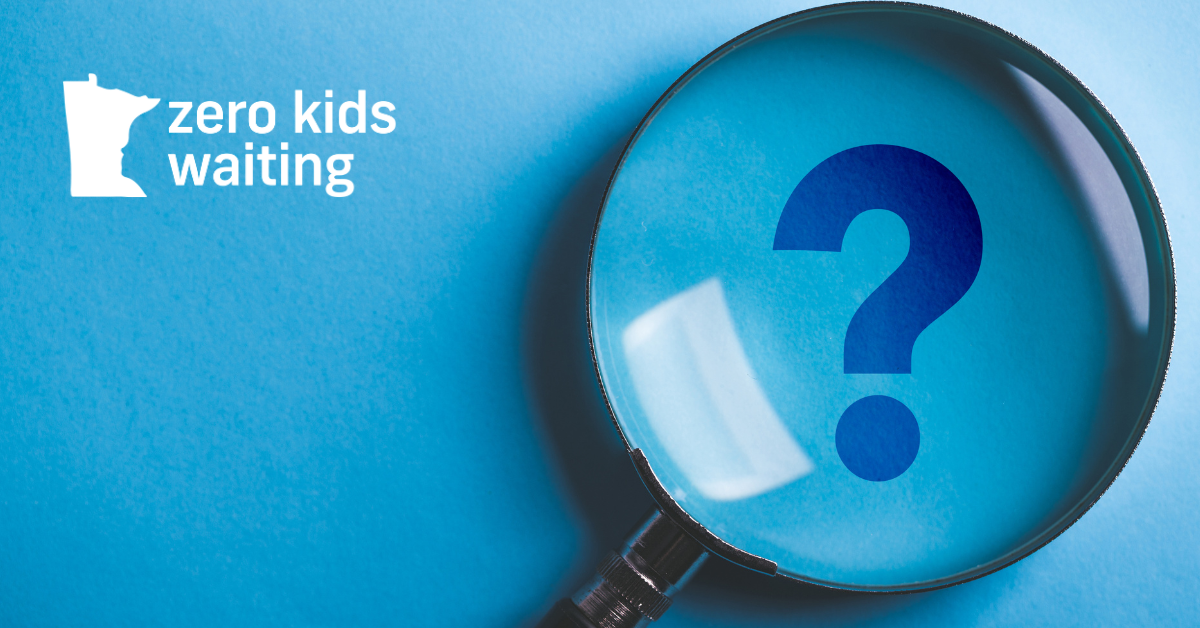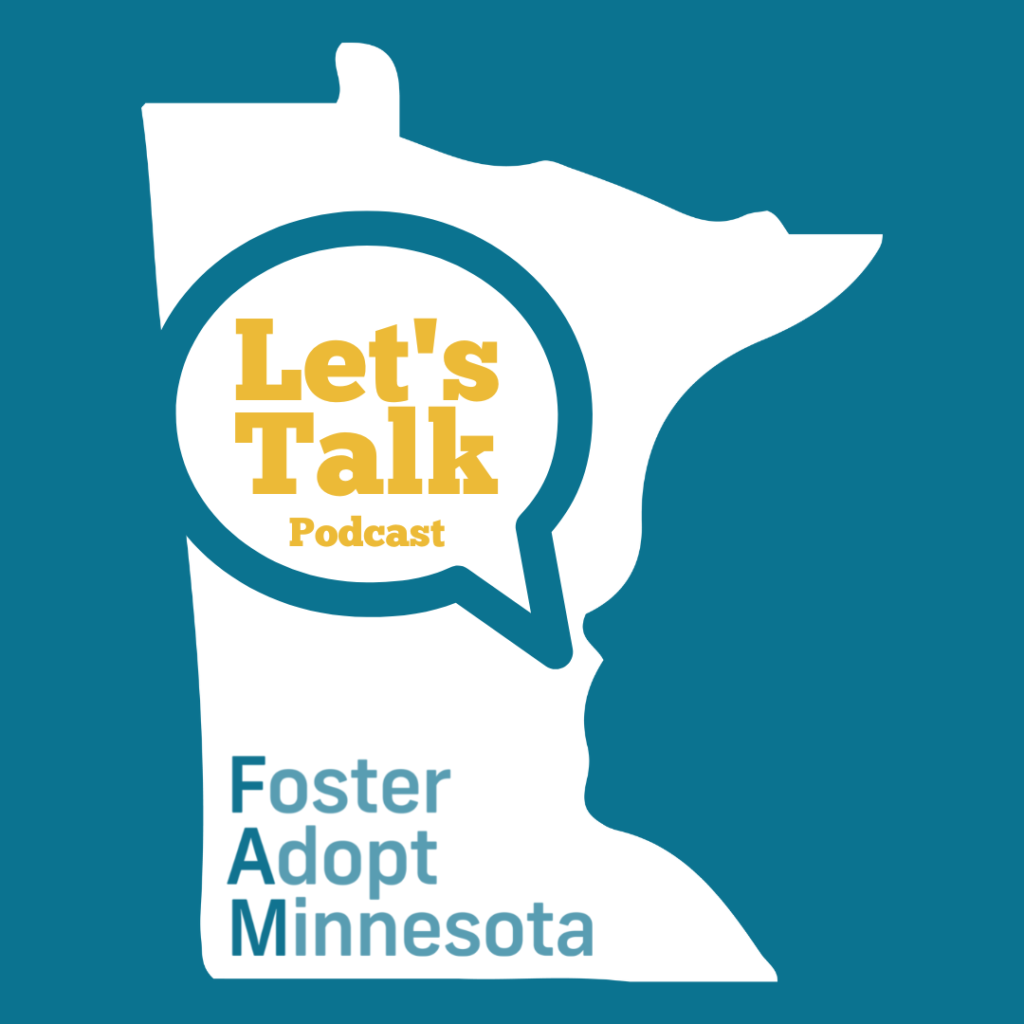For more information, contact Foster Adopt Minnesota directly at 612-861-7115 or info@fosteradoptmn.org. To connect directly with a county, tribal, or private agency, please complete the Foster Care/Adoption Inquiry Form.

Click on the (+) to open each section.
FAQs
- Kinship Care refers to the care of children by relatives or persons with a pre-existing relationship with the child/family. Learn more
- Foster Care is a temporary service for children who have been removed from their homes, with the goal of reunification. Learn more
- Foster Care Adoption is a permanency option for children in foster care who cannot be safely reunified with their birth parents. The adoption process establishes a legal parent-child relationship between a child and their prospective adoptive parents. Learn more
- Concurrent Planning is another form of permanency planning for children placed in out-of-home care. There are two simultaneous plans being made for children: 1) reunification with family, and 2) adoption by a new resource family. Families open to providing concurrent care typically are working towards reunification and are also open to adopting the child if needed. Learn more
FOSTER CARE
There are no fees for the training, application, home study, or other services. There may be minimal fees for families if there are any purchase needs or home repairs to meet safety criteria. This could include smoke alarms, carbon monoxide detectors, fire extinguishers, furnace inspections, or other necessary fixes. Additionally, all household members over the age of 13 are required to complete a background study at the expense of the foster family. Families becoming licensed specifically to care for a relative or kin could qualify for financial assistance to help with the items listed above.
ADOPTION
The State of Minnesota contracts with six Private Adoption Agencies under the Public Private Permanency Collaboration to provide foster care adoption services at no cost to families. Similar to foster care, there are no fees for training, applications, home studies, or other services. See above for a list of possible items families may be required to pay for out of pocket.
Additionally, families can receive a one-time reimbursement after an adoption is completed, which may cover court or travel fees incurred through the adoption process.
The home study is both a process and a document. The process includes a series of interviews with a social worker, typically involving at least one visit in your home. The information gathered in the interviews is written into the home study document, along with other information received in the application packet. The written report is required by Minnesota law for all licensed foster homes. It provides child welfare agencies and courts with the information necessary to determine the most appropriate placement for a child.
During the home study process, families can expect their social worker to:
- Provide continued education to prepare families for placement
- Interview all household members and adult children
- Inspect a family’s home to assess for safety and licensing requirements
- Assess a family’s ability to meet the needs of children in care
- Inquire about social histories of the prospective parent(s)
The timeline of a home study can vary depending on several factors. Some of the factors include how efficient families are in completing required paperwork and training, flexibility of scheduling interviews during business hours, and agency wait times.
Families can expect the process to take approximately 4-6 months from the time an application is submitted to home study completion.
Families who want to adopt a child from foster care must be licensed for foster care (for the purpose of adoption) by the time a child enters their care until the adoption is finalized in court. The court finalization happens approximately 3-6 months after a child moves into the adoptive home and an Adoption Placement Agreement is signed.
The licensing and home study processes occur simultaneously and are led by a family’s social worker. DCYF has set 120 days from the date an application is received as the standard for completion of a foster care license. Depending on a family’s unique circumstances, it may take longer.
Review Minnesota’s Foster Care Requirements here: 2960 – MN Rules Chapter; C8a Family Child Foster Care Licensing Checklist (state.mn.us)
In 2023, families adopted 810 Minnesota children from the foster care system.
Of these children:
- 54% are 12-18 years old
- 68% have a documented special need, including a physical, mental, emotional or behavioral disability
- 61% are Black/African American, American Indian, Asian or Pacific Islander, or two or more races.
- 45% are siblings who need to be adopted together
Source: DHS-4746
Foster and adoptive family characteristics are just as unique and diverse as the children in care.
There is a particular need for families:
- Interested in caring for youth ages 14-21, who make up more than 25% of the children in foster care
- Willing to learn to support children with trauma and other mental health needs, or who have experience in doing so
- Reflective of the ethnic and racial diversity of children in foster care
- Able to keep sibling groups together
- Supportive of LGBTQIA2S+ youth
Source: DHS-4760
Additional family characteristics:
- Any age, with a minimum age requirement of 21
- Single persons, married couples, or cohabitating couples
- Minimal or no parenting experience, or extensive parenting experience
- Individuals of any gender or sexual orientation
- Individuals with well managed physical, medical, or mental health challenges
- Non-English speakers
- Varying financial resources
- Homeowners or renters, as long as all licensing requirements are met (Rule 2960)
Ensuring the safety of a child is the top priority when placing a child into a foster or adoptive home. A fingerprint background study is required as part of the licensing application, and the record is reviewed by the licensing agency. Any criminal record will be discussed during the home study process and included in the home study document. Failure to disclose any criminal history may lead to a license denial. There are specific barriers to licensing that include an individual’s criminal record. Learn more about criminal barriers to foster care and adoption.
The timeline between home study completion and a match or placement provides great opportunity for families to continue education. See below for a variety of education resources:
- Reading nonfiction and fiction books related to foster care, adoption, and parenting
- Attend online and live workshops
- Participate in support groups
- Seek out opportunities to get to know other families who have adopted or fostered. Ask your social worker if there are any networking possibilities with the agency, or the ability to provide respite for a family who is adopting or fostering.
It is important to keep in mind that children in foster care have experienced a great deal of loss, which often makes meeting prospective foster or adoptive families a stressful and difficult experience.
FOSTER CARE
With emergency placements or shelter care, families are typically notified hours before placement is needed, and are given minimal information. Families providing short term respite care tend to meet the child and guardian or foster parent beforehand to assist with transition to and from respite care. In traditional foster care situations, a “meet and greet” or respite weekend may be arranged (when appropriate) to ensure the home is a good fit for the youth.
ADOPTION
Families are typically asked to make a commitment to a child(ren) prior to meeting them. Instead, families are provided extensive information through records, social medical histories, and meetings with adults in the child(ren)’s life. These meetings could involve social workers, foster parents, teachers, therapists, and possibly birth family members.
Read more about the matching process here
FOSTER CARE
Reunification is the ultimate goal for all foster children. While reunification efforts are occurring, foster children may have visitation with their family. The frequency of visits will be determined by the child’s social worker and may range from several times a week to once a month. When appropriate, it is important to support a child’s relationship with their birth parents, extended family, and other important kin relationships.
ADOPTION
Regardless of the reason for adoption, many children have important people in their lives they may want to maintain contact with. When appropriate, supporting these relationships can benefit both your child and your family by providing a sense of history, identity and the ability to create new relationships.
Examples of ongoing relationships may include:
- Birth parents
- Siblings
- Grandparents
- Aunts, uncles or cousins
- Past foster care providers
- Additional people considered important to the child
Siblings are the most commonly identified connection to be maintained. Families should also expect that even if contact with birth family is not formally maintained, teens will often explore connections on their own through social media and other informal networks.
Plans around contact are typically made in collaboration with the child, therapists, social workers, and the adoptive family. Families who have questions or concerns about these types of potential connections are encouraged to talk with their worker or the child’s worker.
Financial Support:
- Northstar Care for Children
– Minnesota’s Assistance program for children in foster care
– Foster, adoptive and kinship families receive a monthly stipend based on a child’s basic and supplemental needs
– Learn more
- Medical Assistance
– Children under age 21 in foster care who are eligible under Title IV-E of the Social Security Act are automatically eligible for Medical Assistance (MA).
– Families who adopt Minnesota children from foster care can utilize Medical Assistance in conjunction with their primary insurance (if applicable).
– Medical needs of the child(ren) should be discussed with the placing worker. - Other possible financial supports
– WIC for children 0-5
– Free/Reduced breakfast and lunch at school
– County clothing allowances
– Head Start for children 0-5
– Early Learning Scholarships
– STAY (Successful Transition to Adulthood for Youth)
Additional Resources:
- Complete the foster care/adoption inquiry form
– Speak to a Foster Adopt Minnesota staff member to learn more and get connected to county, tribal, or private agencies. - Contact a private agency directly
– Working with one of the six PPPC adoption agencies contracted with the State will allow families to move through the adoption process with no fees.
– Private Foster Care Agencies
– Private Adoption Agencies
- Contact your County or Tribal Agency
– While every county in Minnesota works with families wanting to provide foster care to children as a temporary resource, not all counties work with families who have a goal of adoption. Prospective parents who have a goal of adoption should verify that their county of residence can assist with this before pursuing licensure.
– County and Tribal Agencies
For help deciding between a county or private agency, check out our two-part Foster Care 101 Podcast Series: Part 1, Part 2


